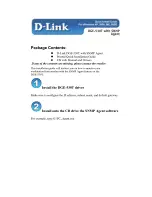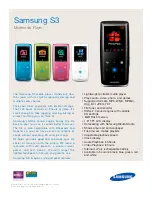
Treetop Circuits
Owner’s Manual for SB-51 SSB adapter
Version 4
6
If you want to use the 12-volt supply to operate the muting relay K101, connect a wire from
the 12vdc point on the SB-51 to terminal 3 on the “REMOTE” terminal strip E101 on the
rear of the chassis (
Fig. 2
). This wire can be routed below the chassis and soldered to the
terminal, or brought through one of the slots in the side of the receiver and fastened under
the screw on the terminal strip. With this in place, a ground applied to terminal 2 (typically
from an associated transmitter) will mute the receiver.
Please note that this relay does
not replace the antenna relay in the transmitter.
Operation
Now you can connect an antenna and try it out.
Control functions are unchanged. AM operation is completely unaffected. On SSB, the
receiver will be much easier to operate. In most situations, you can leave the RF gain
turned up and the AVC on. It will no longer be necessary to “ride” the RF gain control.
The band designations on the BFO pitch knob are mostly self-explanatory, but the following
notes may be helpful.
The sticker with yellow highlights is marked for the ham bands. Setting the knob according
to the sticker automatically selects LSB for bands below 10 megacycles, and USB above 10
megacycles. Since portions of the 10 meter band fall in three different bands in this
receiver, things get a bit more complicated. The portion from 28 to 28.5 megacycles is
designated 10A, the portion from 28.5 to 29.5 megacycles is 10B, and the portion from 29.5
to 29.6 megacycles is 10C.
If you never need to listen to SSB outside the ham bands, you can skip the next two
paragraphs, and ignore the “blue” settings. But they’ll come in handy if there’s an
interesting SSB signal around (for example) 13 megacycles.
To provide for general coverage, we take advantage of the fact that there are actually two
positions of the BFO PITCH control which will produce a given frequency. The sticker with
the blue highlights uses these “extra” positions. The section marked “3, <10 EVEN, >10
ODD” is used for Band 3 (2.5 to 3.5 MHz) and for bands 2, 4, 6, 8, and the lower half of Band
10. This automatically gives LSB operation. Above 10 MHz, USB is normally used, so the
same setting would be used for odd Bands 11, 13, …..29.
The other section of this sticker applies to bands 1, 2, 3, 5, 7, 9, the upper portion of Band
10, and Bands 12, 14, …..30.
You’ll need to establish the best BFO PITCH settings for your particular receiver. To get
started, turn the SELECTIVITY control to 0 and set the mechanical filter switch (if present)
to 6 kc. Turn the AVC and BFO on. Choose a band where there will be lots of SSB signals,
and set the BFO PITCH control to the position shown in Fig. 3, or the diametrically opposite
position, depending on the band you’re using. For instance, on 20 meters, you’d use the
opposite position. With a bit of careful tuning, you should be able to receive SSB stations.
You’ll find the tuning a bit more critical than with many receivers; this is because the




























